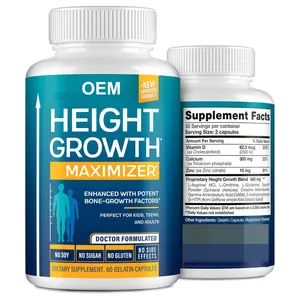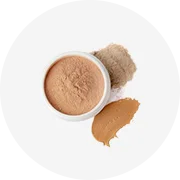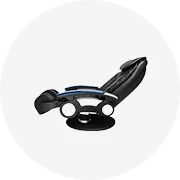ได้รับความนิยมในอุตสาหกรรมของคุณ


คีย์แพดที่กำหนดเองกราฟิกซ้อนทับแผงปุ่มเมมเบรนปุ่มกดแป้นพิมพ์เมมเบรนสวิทช์เมมเบรน
พร้อมส่ง
฿22.23 - ฿33.34
การสั่งซื้อขั้นต่ำ: 10 ชิ้น
การจัดส่งต่อชิ้น: ฿24.45



โรงงานปรับแต่งวงจร FPC ปุ่มสัมผัสแบบ Capacitive สวิตช์เมมเบรนแผงเมมเบรนกราฟิกซ้อนทับ
฿25.93 - ฿46.30
การสั่งซื้อขั้นต่ำ: 100 ชิ้น







RIKA RK500-13เพาะเลี้ยงสัตว์น้ำตรวจจับผลิตของเหลวความเค็ม EC เซ็นเซอร์
฿5,888.54 - ฿7,258.83
การสั่งซื้อขั้นต่ำ: 1 ชิ้น







โฟโตอิเล็กทริคเซนเซอร์สําหรับการตรวจจับตําแหน่งน้ําแร่ผ่านเซ็นเซอร์แสงลําแสง NPN
฿604.41 - ฿879.21
การสั่งซื้อขั้นต่ำ: 20 ชิ้น







แผงสวิทช์เมมเบรน DIY,ปุ่มลายนูนสำหรับพิมพ์ลายสัตว์ที่กำหนดเองสำหรับหน้าจอสัมผัสเมมเบรนสวิตช์ปุ่มกด
฿4.45 - ฿9.26
การสั่งซื้อขั้นต่ำ: 500 ชิ้น


เมมเบรนครอบคลุมแสงละลาย CO2เซ็นเซอร์ละลายเซ็นเซอร์ก๊าซคาร์บอนไดออกไซด์สำหรับเพาะเลี้ยงสัตว์น้ำ
฿0.0371 - ฿0.3704
การสั่งซื้อขั้นต่ำ: 1 ชิ้น






อัจฉริยะ FSR แรงสัมผัสเซ็นเซอร์วัดความดันที่มีความยืดหยุ่นเซ็นเซอร์เมมเบรน
฿62.96 - ฿103.70
การสั่งซื้อขั้นต่ำ: 100 ชิ้น












LEFOO เซ็นเซอร์เคมีไฟฟ้าความแม่นยำสูงสองชั้นกันน้ำเมมเบรน CO RS485เครื่องส่งสัญญาณคาร์บอนมอนอกไซด์
฿1,629.54 - ฿2,444.30
การสั่งซื้อขั้นต่ำ: 1 ชิ้น









โรงงานซิลิคอนเติมน้ำมัน Piezoresistive เซ็นเซอร์ความดันราคาถูกเครื่องส่งสัญญาณความดัน,ความดันสูญญากาศ Sensor,ต่ำราคา SENSOR
฿314.80 - ฿322.21
การสั่งซื้อขั้นต่ำ: 3000 ชิ้น






ผู้โดยสารรถแท็กซี่เพื่อความปลอดภัยสากลอัตโนมัติมินิบัสรถความดันที่นั่งเซ็นเซอร์การเข้าพัก
พร้อมส่ง
฿111.11
การสั่งซื้อขั้นต่ำ: 1 ชิ้น
การจัดส่งต่อชิ้น: ฿160.00
การค้นหาที่เกี่ยวข้อง:
เซ็นเซอร์ความต้านทานน้ำเซ็นเซอร์นิเวศเซ็นเซอร์ dhtเซ็นเซอร์สำหรับโรแลนด์โรแลนด์เซ็นเซอร์การสั่นสะเทือนประตูเซ็นเซอร์ชีพจรขนาดเล็กเซ็นเซอร์เปลี่ยนเซ็นเซอร์ชีวภาพเซ็นเซอร์ความร้อนแรงดันสูงเซ็นเซอร์ด้านข้างเซ็นเซอร์ความต้านทานการทำงานของเซ็นเซอร์หลอด led เซ็นเซอร์จีนเซ็นเซอร์น้ำแข็งผู้จัดจำหน่ายเซ็นเซอร์เซรามิก






EHEDG 3A รับรองสุขาภิบาลนมถังเซ็นเซอร์ระดับที่มีเมมเบรน
฿4,999.71 - ฿7,221.80
การสั่งซื้อขั้นต่ำ: 1 ชิ้น





เซ็นเซอร์ที่หุ้มด้วยไฟเบอร์ SPF50330ตรวจสอบการนอนหลับศึกษาฟิล์มบางเซ็นเซอร์ piezoelectric FSR
฿538.86 - ฿639.60
การสั่งซื้อขั้นต่ำ: 2 ชิ้น

ความดันความแม่นยำสูง Transducer-8201H-Relative-ตัวแปลงสัญญาณความดันสัมบูรณ์,เมมเบรน,อะนาล็อก,กะทัดรัด,แข็งแรง,แม่นยำ
฿30,462.76 - ฿38,227.78
การสั่งซื้อขั้นต่ำ: 1 ชิ้น






เซ็นเซอร์ชั่งน้ําหนักชนิดกล่องเมมเบรน 10 กก. 20 กก. 50 กก. แรงดันช่วงขนาดใหญ่, น้ําหนัก, เซ็นเซอร์จอแสดงผลดิจิตอลแรงโน้มถ่วง
฿235.18 - ฿528.86
การสั่งซื้อขั้นต่ำ: 2 ชิ้น
การจัดส่งต่อชิ้น: ฿902.91






FYX Stock SHT30 SHT30-DIS-F เซ็นเซอร์อุณหภูมิความชื้นแบบดิจิตอลพร้อมเมมเบรนกรอง
฿77.78 - ฿114.07
การสั่งซื้อขั้นต่ำ: 5 ชิ้น
การจัดส่งต่อชิ้น: ฿39.63






เซ็นเซอร์ก๊าซซัลเฟอร์ไดออกไซด์ในสต็อก (เซ็นเซอร์ SO2ในสต็อก) SO2-BF
฿70.37 - ฿155.55
การสั่งซื้อขั้นต่ำ: 2 ชิ้น












เซ็นเซอร์จับความใกล้เคียงอุปนัย Huachuang Sick IDF ระบุเมมเบรนสองชั้นได้อย่างง่ายดายและปลอดภัย
฿370.35
การสั่งซื้อขั้นต่ำ: 5 ชิ้น






MPXV5004GC6U เซ็นเซอร์ชิป IC 2024 อุณหภูมิสัมผัสเซ็นเซอร์แม่เหล็กส่วนประกอบอิเล็กทรอนิกส์เดิม
฿62.22 - ฿73.70
การสั่งซื้อขั้นต่ำ: 10 ชิ้น
การจัดส่งต่อชิ้น: ฿175.92






SHT30-DIS-F เซ็นเซอร์ส่วนประกอบอิเล็กทรอนิกส์ BOM สนับสนุนใหม่และเป็นต้นฉบับ
฿111.11 - ฿148.14
การสั่งซื้อขั้นต่ำ: 1 ชิ้น






Soushine เซนเซอร์วัดความดันฟิล์ม,เซ็นเซอร์วัดความดันอัจฉริยะ FSR Force และเซ็นเซอร์สัมผัส
฿74.07 - ฿129.63
การสั่งซื้อขั้นต่ำ: 10 ชิ้น






FICLUX แผงหน้าจอสัมผัสระบบสัมผัส,สวิตช์เมมเบรนสวิตช์หรี่ไฟสวิตช์เซ็นเซอร์สัมผัสสำหรับกระจก
พร้อมส่ง
฿42.60
การสั่งซื้อขั้นต่ำ: 10 ชิ้น
การจัดส่งต่อชิ้น: ฿30.37



ม่านกั้นแสงตรวจจับการแยกยานพาหนะ,ม่านแสงนิรภัยเซ็นเซอร์พื้นที่หน้าจออินฟราเรด
฿29,257.53 - ฿32,961.01
การสั่งซื้อขั้นต่ำ: 2 ชุด






Taidacent แผ่นเซ็นเซอร์กระจายความดันแบบปรับแต่งได้,แผ่นเซ็นเซอร์ความดันพื้นผิวแผ่นเซนเซอร์พื้นรองเท้าเมมเบรน
฿3,963.47 - ฿5,073.41
การสั่งซื้อขั้นต่ำ: 2 ชิ้น






อาหารเครื่องดื่มน้ำดื่มถังความดันเซ็นเซอร์ระดับเกรดอาหาร
฿3,014.64 - ฿5,925.58
การสั่งซื้อขั้นต่ำ: 1 ชิ้น



วงจรอิเล็กโทรด DPC เมมเบรนสำหรับ IDAM แผงวงจรเซรามิก PCB อิเล็กโทรดวงกลม0.3A 0.2V เซนเซอร์ไบโอเมตริกซ์
฿1,444.36
การสั่งซื้อขั้นต่ำ: undefined






น้ําหนักที่นั่งในรถยนต์ความดันเมมเบรนเบาะที่นั่งรถโรงเรียนเซ็นเซอร์รถยนต์
฿16.67 - ฿103.70
การสั่งซื้อขั้นต่ำ: 100 ชิ้น






ซัลเฟอร์ไดออกไซด์เซ็นเซอร์ (SO2เซ็นเซอร์) SO2-AF
พร้อมส่ง
฿4,333.08
การสั่งซื้อขั้นต่ำ: 1 ชิ้น
การจัดส่งต่อชิ้น: ฿452.57






รถรถบัสความปลอดภัยที่นั่งเข็มขัดเตือนเสื่อเซ็นเซอร์ความดันครอบครอง
฿21.86 - ฿220.36
การสั่งซื้อขั้นต่ำ: 10 ชิ้น






เมมเบรนสัมผัสจุด Piezoresistive ความดันรถที่นั่งเซ็นเซอร์จากเซินเจิ้น
฿81.48 - ฿111.11
การสั่งซื้อขั้นต่ำ: 2 ชิ้น






ที่กำหนดเองกันน้ำรถที่นั่งครอบครองน้ำหนักตรวจจับเซ็นเซอร์ความดันที่นั่งรถ
฿66.67 - ฿118.52
การสั่งซื้อขั้นต่ำ: 10 ชิ้น






โรงงานมีชุดเซ็นเซอร์เมมเบรนพื้นรองเท้ากีฬาแบบกำหนดเองที่สมบูรณ์
฿370.35 - ฿2,222.10
การสั่งซื้อขั้นต่ำ: 1000 ชิ้น






DC12V ปลั๊กอินสีดำ24V เซ็นเซอร์ประตูตู้อเนกประสงค์ขนาดเล็กสวิตช์เซ็นเซอร์ IR LED สวิตช์เซ็นเซอร์ประตูอินฟราเรดอิเล็กทรอนิกส์สำหรับห้องโดยสาร
พร้อมส่ง
฿51.85 - ฿61.48
การสั่งซื้อขั้นต่ำ: 5 ชิ้น
การจัดส่งต่อชิ้น: ฿70.37






โรงงานโดยตรง SalesDC12V สัมผัสหรี่เรดาร์เหนี่ยวนำแสงห้องน้ำกระจกเซ็นเซอร์สัมผัสสวิทช์
พร้อมส่ง
฿129.26 - ฿151.48
การสั่งซื้อขั้นต่ำ: 2 ชิ้น
การจัดส่งต่อชิ้น: ฿92.96




ต้นฉบับยาว FSR ตัวต้านทานที่ไวต่อแรง FSR402 เซ็นเซอร์ความดันเมมเบรนแบบต้านทาน 0.5 นิ้วสําหรับ Arduino KIT
฿44.45 - ฿55.56
การสั่งซื้อขั้นต่ำ: 30 ชุด
หมวดหมู่ยอดนิยม
เกี่ยวกับ เมมเบรนเซ็นเซอร์
เมมเบรนเซ็นเซอร์ ไม่ใช่เรื่องใหม่สำหรับคนทั่วไปในปัจจุบันและไม่ถือว่าเป็นสิ่งต้องห้ามอีกต่อไป หากคุณกำลังมองหาความสุขสุดท้ายนี้คุณต้องตรวจสอบความยิ่งใหญ่ คอลเลกชัน เมมเบรนเซ็นเซอร์ ที่ Alibaba.com เหล่านี้ยั่วยวนและโค้ง เมมเบรนเซ็นเซอร์ คุ้มค่ากับเงินทุกบาทและมั่นใจว่าจะทำให้ค่ำคืนนี้พิเศษสำหรับคุณ ตุ๊กตาเหล่านี้มีลักษณะเหมือนจริงตั้งแต่ขนไปจนถึงปลายเท้าในทุกแง่มุม
ไม่ว่าคุณจะเป็นคนขี้เหงาที่กำลังมองหาคู่ชีวิตที่เหมือนมีชีวิตหรือคู่รักที่ต้องการเติมชีวิตชีวาให้กับชีวิตคุณสามารถใช้สิ่งเหล่านี้ได้ . เมมเบรนเซ็นเซอร์ สำหรับจุดไฟนั้น ที่งดงามเหล่านี้ เมมเบรนเซ็นเซอร์ สามารถปรับแต่งได้ตามความคาดหวังของคุณ น่าทึ่งเหล่านี้ เมมเบรนเซ็นเซอร์ มีให้เลือกทั้งชายและหญิงและทำจากซิลิโคนเกรดยาเพื่อความปลอดภัยในการใช้งาน รับตอนนี้และเพลิดเพลินไปกับค่ำคืนแห่งความหลงใหลและไฟ
Alibaba.com ขอเสนอสิ่งที่น่าทึ่งเหล่านี้ เมมเบรนเซ็นเซอร์ ในทุกรูปร่างขนาดและชาติพันธุ์ ไม่ว่าความต้องการของคุณสำหรับไฟล์. เมมเบรนเซ็นเซอร์ คุณสามารถหาได้ทั้งหมดบนไซต์ เหล่านี้ เมมเบรนเซ็นเซอร์ ได้รับการขึ้นรูปโดยช่างฝีมือที่ดีที่สุดและทุกรายละเอียดที่ซับซ้อนจะได้รับการตรวจสอบอย่างละเอียด ตุ๊กตาเหล่านี้มีดวงตาผมเล็บและส่วนอื่น ๆ ของร่างกายคล้ายกับคนในชีวิตจริง
Alibaba.com ให้บริการที่หลากหลาย เมมเบรนเซ็นเซอร์ ที่สามารถช่วยคุณซื้อผลิตภัณฑ์ที่เหมาะสมกับงบประมาณของคุณและข้อกำหนดอื่น ๆ ผลิตภัณฑ์เหล่านี้ปลอดภัยต่อการใช้งานได้รับการรับรองและเป็นมิตรกับสิ่งแวดล้อม มีคำสั่งซื้อ OEM สำหรับผลิตภัณฑ์เหล่านี้
ไม่ว่าคุณจะเป็นคนขี้เหงาที่กำลังมองหาคู่ชีวิตที่เหมือนมีชีวิตหรือคู่รักที่ต้องการเติมชีวิตชีวาให้กับชีวิตคุณสามารถใช้สิ่งเหล่านี้ได้ . เมมเบรนเซ็นเซอร์ สำหรับจุดไฟนั้น ที่งดงามเหล่านี้ เมมเบรนเซ็นเซอร์ สามารถปรับแต่งได้ตามความคาดหวังของคุณ น่าทึ่งเหล่านี้ เมมเบรนเซ็นเซอร์ มีให้เลือกทั้งชายและหญิงและทำจากซิลิโคนเกรดยาเพื่อความปลอดภัยในการใช้งาน รับตอนนี้และเพลิดเพลินไปกับค่ำคืนแห่งความหลงใหลและไฟ
Alibaba.com ขอเสนอสิ่งที่น่าทึ่งเหล่านี้ เมมเบรนเซ็นเซอร์ ในทุกรูปร่างขนาดและชาติพันธุ์ ไม่ว่าความต้องการของคุณสำหรับไฟล์. เมมเบรนเซ็นเซอร์ คุณสามารถหาได้ทั้งหมดบนไซต์ เหล่านี้ เมมเบรนเซ็นเซอร์ ได้รับการขึ้นรูปโดยช่างฝีมือที่ดีที่สุดและทุกรายละเอียดที่ซับซ้อนจะได้รับการตรวจสอบอย่างละเอียด ตุ๊กตาเหล่านี้มีดวงตาผมเล็บและส่วนอื่น ๆ ของร่างกายคล้ายกับคนในชีวิตจริง
Alibaba.com ให้บริการที่หลากหลาย เมมเบรนเซ็นเซอร์ ที่สามารถช่วยคุณซื้อผลิตภัณฑ์ที่เหมาะสมกับงบประมาณของคุณและข้อกำหนดอื่น ๆ ผลิตภัณฑ์เหล่านี้ปลอดภัยต่อการใช้งานได้รับการรับรองและเป็นมิตรกับสิ่งแวดล้อม มีคำสั่งซื้อ OEM สำหรับผลิตภัณฑ์เหล่านี้




























